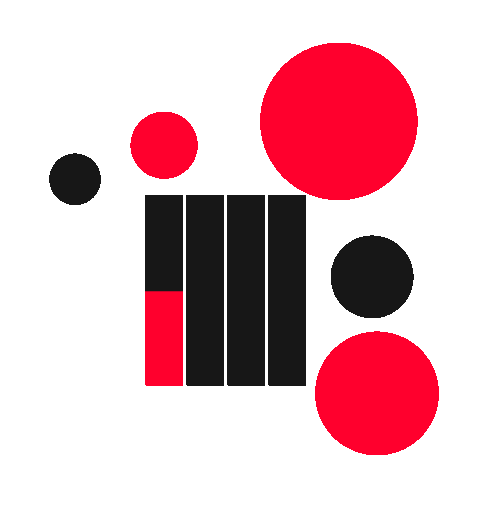Blade Zenon was a 2015 MMORPG project where every member situated within the website participated by sharing their ideas and designs, which were integrated into the game.
Blade Zenon: What Happens When You Attempt the Impossible at 12
The Value of Unrealistic Ambition
At 12 years old, I decided to build an MMORPG. Anyone with game development experience knows this is absurd—MMORPGs require teams of dozens of professionals, years of development time, significant funding, and complex server infrastructure. A single kid with Unity had no realistic chance of shipping a commercial MMORPG. I knew this was impossible. I did it anyway.
Blade Zenon never became the game I imagined. It never launched commercially. But attempting the impossible taught me more about building products, managing communities, and shipping software than any tutorial or course could have. Sometimes the value of a project isn’t in its success, but in what you learn by trying.

The Lesson: Start Before You’re Ready
Most people wait until they’re qualified before starting ambitious projects. They want to learn everything first, get the right credentials, build the perfect foundation. This caution makes sense—but it also ensures they never start at all. At 12, I didn’t have the wisdom to wait. I just started building.
What happened next surprised me. I launched a forum, posted about the project, and attracted over 100 active members who wanted to contribute. These weren’t other kids playing around—many were adults who saw potential in the collaborative concept and wanted to participate. They shared ideas for character classes, proposed game mechanics, debated lore details, and created concept art. The community became self-sustaining, with members engaging each other even when I couldn’t implement features quickly enough.
The forum architecture was simple: themed templates, clear hierarchy, and basic moderation tools. Nothing sophisticated, but it worked. Members felt ownership because I actually implemented their suggestions, published changelog-style updates showing their contributions, and gave credit for ideas that made it into the game. This feedback loop kept people engaged even though the underlying game remained incomplete.

What You Learn When You Fail at Something Impossible
Attempting an MMORPG taught me skills that translate to every project since. Project management: I learned to evaluate feature requests against technical constraints and prioritize what would deliver the most value to the community. Communication: I discovered that transparency about obstacles builds trust—when I couldn’t implement something, explaining why maintained credibility rather than damaging it. Community building: I learned that people engage more deeply when they see their input reflected in the product, a lesson that applies equally to game development and software features.
Technical skills came naturally because I needed them to ship features. Unity development, server basics, database concepts, forum administration—I learned these because the project demanded them, not because I studied them abstractly. This practical, need-driven learning proved far more effective than theoretical study.
Perhaps most importantly, I learned that shipping something imperfect beats perfecting something that never ships. Every update, even small ones, generated excitement and feedback. The community cared more about forward momentum than polish. This lesson—that iteration beats perfection—remains fundamental to how I approach development today.

The Paradox of Impossible Projects
Here’s the paradox: attempting impossible projects makes you capable of completing realistic ones. If I had started with a “reasonable” first project—maybe a simple mobile game or a basic web app—I would have learned incremental lessons. By attempting an MMORPG, I encountered problems so complex that solving even a fraction of them required developing real capabilities.
The project failed by conventional measures. No commercial launch, no revenue, no sustained player base. But measuring success by those metrics misses the point. The real outcome was 100+ people engaging with something I built, a working prototype that demonstrated core concepts, and skills that carried forward into every subsequent project. Most importantly, I learned that you don’t need permission to attempt ambitious things. You don’t need credentials or perfect preparation. You just need to start and figure it out as you go.
Why This Matters for Anyone Building Anything
If you’re waiting until you’re “ready” to start your ambitious project, you’re making a mistake. You’ll never be ready. The only way to become ready is to start before you are. Pick something unreasonably ambitious, something that seems impossible with your current skills. Start building it anyway.
You probably won’t succeed in the way you imagine. The project might fail by conventional standards. But you’ll learn more from attempting and failing at something ambitious than from succeeding at something safe. The skills you develop, the networks you build, and the confidence you gain from trying will serve you in ways that finishing a modest project never could.
Blade Zenon taught me that ambitious failure beats modest success. It taught me to ship quickly, listen to users, iterate based on feedback, and maintain transparent communication even when progress stalls. These lessons now apply to software development, product design, and system architecture. The specific context changed, but the principles remain the same.
So don’t wait. Start the impossible project. Build the thing you’re not qualified to build yet. You’ll figure it out along the way, and even if the project fails, you’ll emerge with capabilities you didn’t have before. That’s not just acceptable—that’s the entire point.
